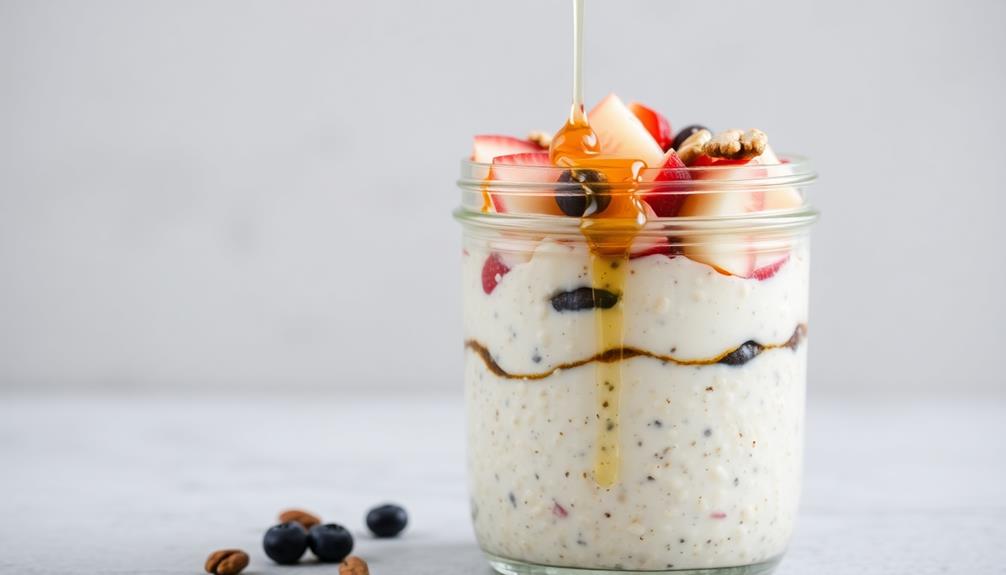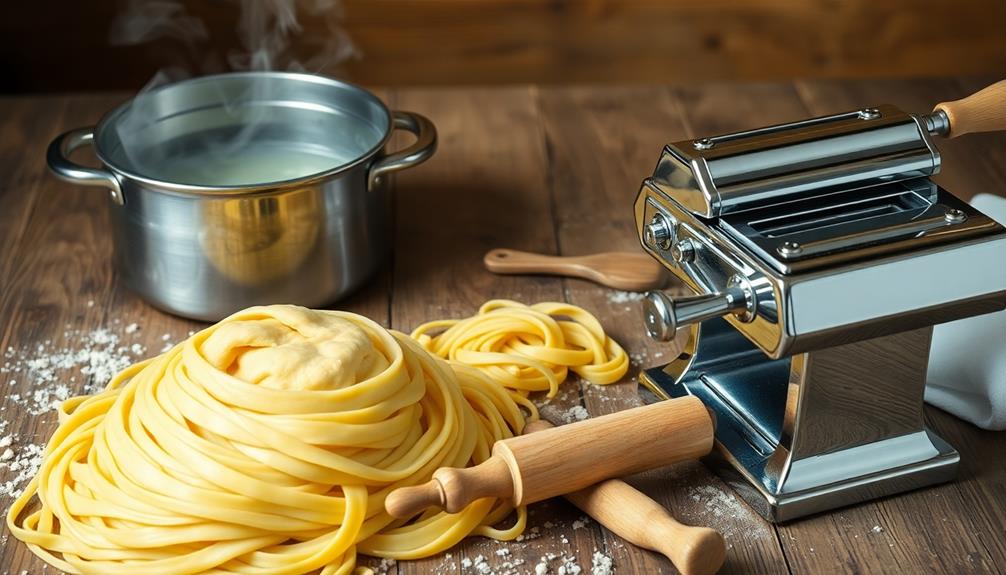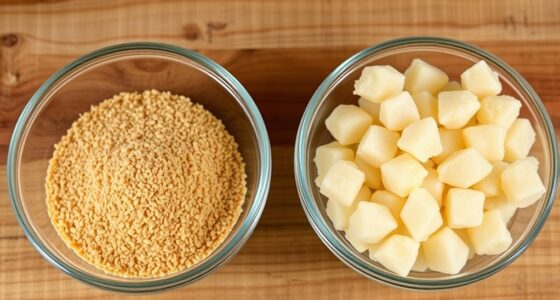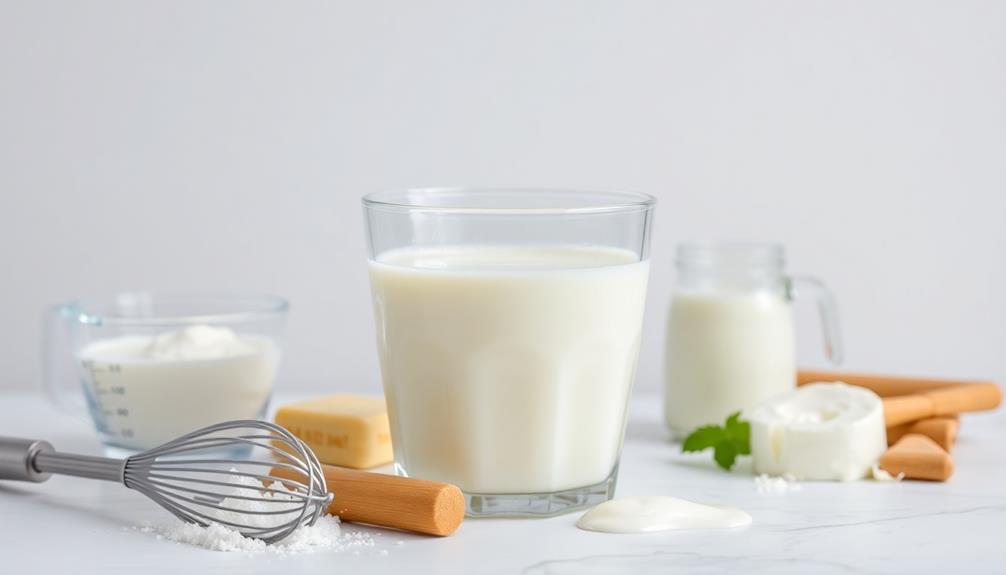Overnight oats are a simple, make-ahead breakfast that'll have you fueled and ready to tackle your morning. Just combine old-fashioned oats, milk, yogurt, and sweeteners in a bowl, then let it all soak overnight in the fridge. In the morning, you'll have a creamy, nutrient-dense breakfast ready to go. Top it with fresh fruit, nuts, or a drizzle of honey for extra flavor and crunch. Overnight oats are packed with slow-releasing carbs, fiber, and protein to keep you feeling full and energized. The customizable recipe allows you to experiment with your favorite ingredients – there's no limit to the tasty flavor combinations you can create!
Key Takeaways
- Overnight oats are a quick, nutritious breakfast option made by soaking oats in liquid like milk or yogurt overnight.
- The oats soften and develop a creamy, pudding-like texture, providing sustained energy and satisfaction throughout the morning.
- Overnight oats can be customized with a variety of toppings and mix-ins, including fruits, nuts, nut butters, and sweeteners.
- Preparing overnight oats in advance saves time in the morning and allows for easy meal prep and portability.
- Overnight oats are versatile and can be adapted to various dietary preferences, such as vegan, gluten-free, or low-sugar.
History
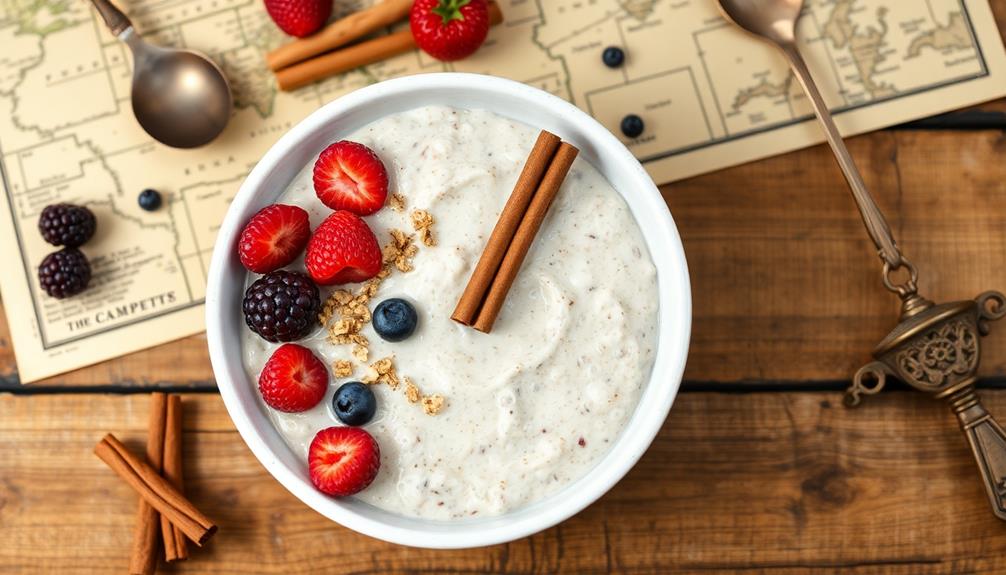
Over time, the concept of overnight oats evolved, with people experimenting with different ingredients and flavors.
The modern overnight oats recipe, as we know it today, gained popularity in the 21st century as a convenient and nutritious breakfast option. The simplicity of soaking oats in liquid overnight, allowing them to soften and thicken, appealed to busy individuals seeking a healthy and easy-to-prepare meal.
The versatility of overnight oats has contributed to their widespread appeal. You can customize the recipe by adding a variety of toppings, sweeteners, and mix-ins to suit your taste preferences.
This make-ahead breakfast has become a staple for those looking to streamline their morning routine and start the day with a nourishing meal.
Recipe

Overnight oats are a delightful and nutritious breakfast option that can be prepared in advance, making your mornings a breeze. This easy-to-follow recipe will guide you through the steps to create a perfectly creamy and satisfying bowl of overnight oats.
Overnight oats are a simple, make-ahead breakfast that allows the oats to soak in liquid overnight, resulting in a soft, pudding-like texture. The long soak time helps to break down the oats, making them easier to digest and allowing the flavors to meld together seamlessly.
- 1 cup old-fashioned rolled oats
- 1 cup milk (dairy, almond, or oat milk)
- 1/2 cup plain Greek yogurt
- 1 tablespoon honey (or maple syrup)
- 1 teaspoon vanilla extract
- 1/4 teaspoon ground cinnamon
- Pinch of salt
In a medium-sized bowl, combine the rolled oats, milk, Greek yogurt, honey, vanilla extract, cinnamon, and salt. Stir well until all the ingredients are evenly distributed. Cover the bowl and refrigerate for at least 4 hours, or up to 5 days.
When ready to serve, the overnight oats will have a thick, creamy consistency. You can enjoy them as-is or top them with your favorite fruits, nuts, or additional toppings of your choice.
The recipe can be easily customized to your taste preferences, making it a versatile and satisfying breakfast option. You can add your favorite toppings, such as fresh herbs, cheese, or even a drizzle of your preferred sauce, to create a dish that’s uniquely yours. Whether you’re in the mood for something savory or sweet, this meal can adapt perfectly to any palate. For a heartier option, pair it with the ultimate mashed potatoes recipe to create a breakfast experience that’s both comforting and indulgent.
Cooking Steps

First, mix together the oats, milk, yogurt, chia seeds, and any other desired ingredients in a bowl or jar.
Next, cover the mixture and refrigerate it overnight so the oats can soften and absorb the flavors.
In the morning, enjoy your chilled overnight oats, adding your favorite toppings like fresh fruit, nuts, or a drizzle of honey to customize the flavor.
Step 1. Mix Ingredients
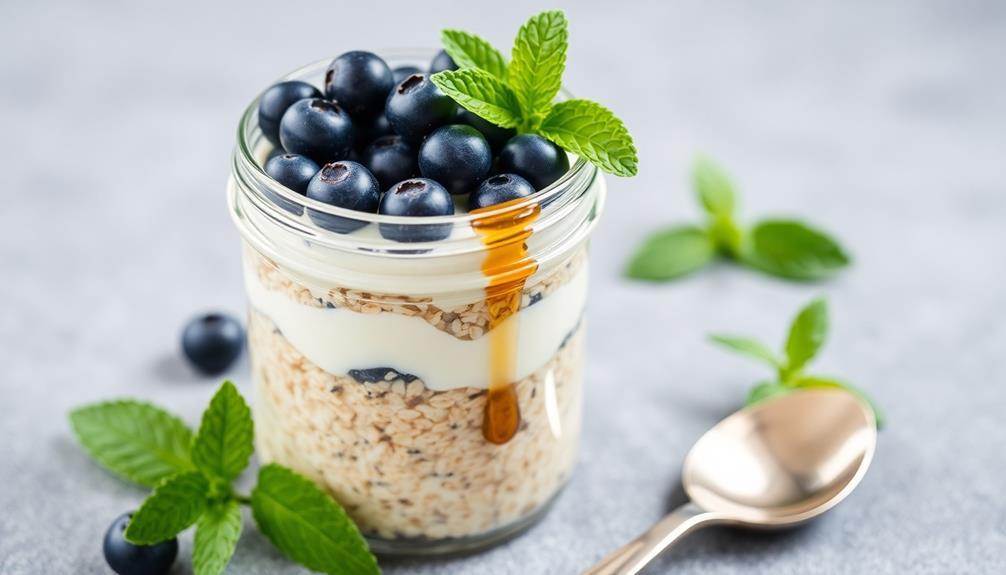
To begin, gather all the necessary ingredients. In a medium-sized bowl, combine the old-fashioned oats, milk, Greek yogurt, maple syrup, and chia seeds. Stir the mixture until all the ingredients are evenly distributed and well combined.
Next, add any desired mix-ins, such as fresh fruit, nuts, or cinnamon. Gently fold these add-ins into the oat mixture, ensuring they're evenly dispersed throughout.
Once the ingredients are mixed, cover the bowl with a lid or plastic wrap and place it in the refrigerator. Allow the oats to chill and soak up the liquid for at least 8 hours, or overnight. This process helps the oats soften and the flavors to meld together.
When you're ready to enjoy your overnight oats, simply remove the bowl from the fridge. The oats should have a creamy, pudding-like texture.
Feel free to add any additional toppings or garnishes, such as a drizzle of honey or a sprinkle of toasted coconut.
Step 2. Cover and Refrigerate Overnight
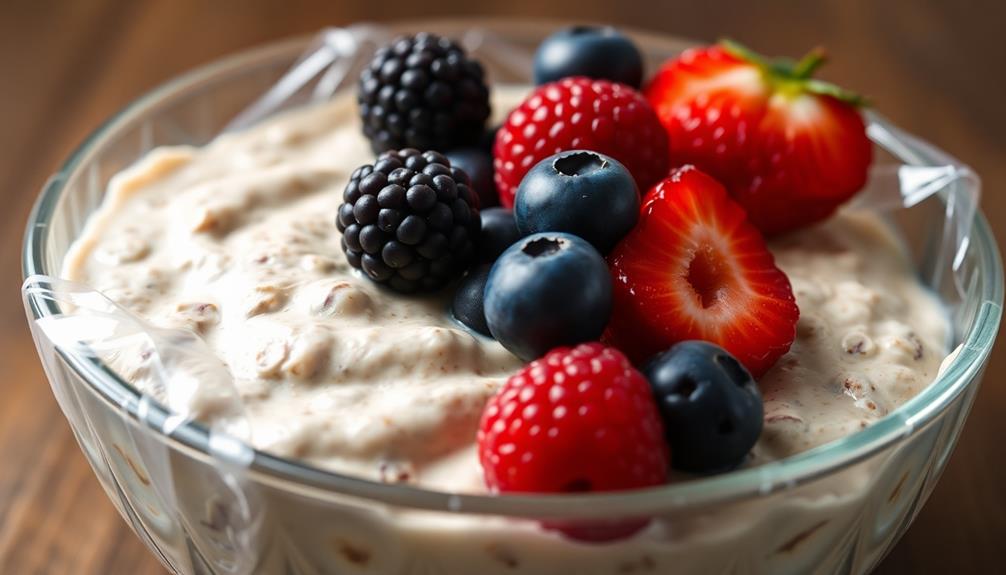
Once the ingredients are mixed, cover the bowl with a lid or plastic wrap and place it in the refrigerator. This step is crucial to allow the oats to soak up all the flavors and develop a creamy, pudding-like texture.
Leaving the oats uncovered in the fridge would result in them drying out and becoming unappetizing.
By refrigerating the oats overnight, the starches in the oats will slowly break down, creating a smooth, thickened consistency. This process also helps the chia seeds and any other add-ins, like nuts or dried fruit, to soften and incorporate seamlessly into the oats.
When you're ready to enjoy your overnight oats in the morning, simply remove the bowl from the refrigerator. The oats will have transformed into a delightful, ready-to-eat breakfast that you can customize with your favorite toppings, such as fresh fruit, a drizzle of honey, or a sprinkle of cinnamon.
Step 3. Enjoy Chilled Overnight Oats
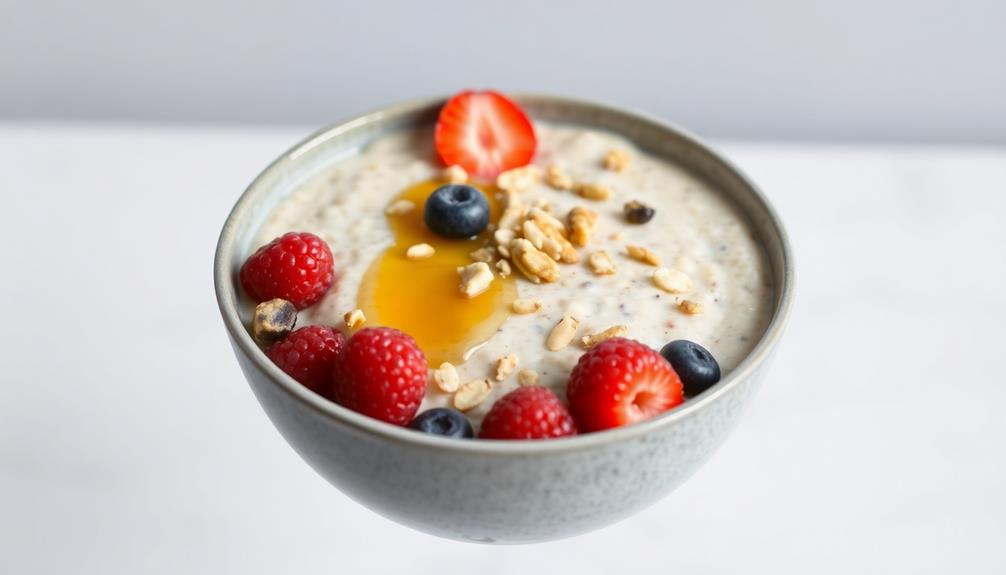
After letting the oats chill overnight, you're now ready to enjoy your delightfully creamy overnight oats.
First, remove the covered container from the fridge. You'll notice the oats have thickened and absorbed the liquid, creating a deliciously smooth texture. Grab a spoon and dive in!
For topping ideas, consider adding fresh fruit like berries, sliced bananas, or diced apples. You can also sprinkle on some nuts, seeds, shredded coconut, or a drizzle of honey or maple syrup for extra flavor and crunch.
Feel free to get creative and customize your overnight oats to your liking.
Whether you enjoy them as a quick and nutritious breakfast or an afternoon snack, these chilled overnight oats are sure to satisfy.
The combination of the soft, creamy oats and your choice of tasty toppings makes for a well-balanced and delightful meal. Whether you prefer fresh fruits, crunchy nuts, or a drizzle of honey, the variety of options allows you to customize the dish to suit your taste buds. This creamy homemade oatmeal recipe is not only delicious but also packed with nutrients, making it a perfect choice for a nourishing breakfast. Start your day on the right note with this comforting bowl of goodness that feels like a warm hug in every bite.
Savor every bite and start your day off on a nourishing note.
Step 4. Add Your Favorite Toppings
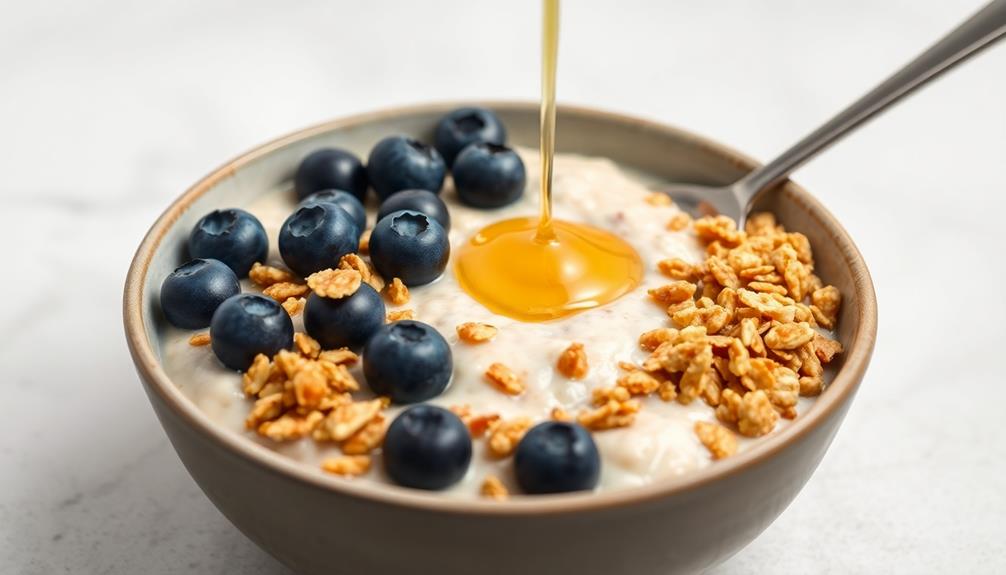
Your freshly chilled overnight oats are now ready for their grand finale – adding your favorite toppings!
The beauty of overnight oats lies in their customizability, allowing you to craft a delightful breakfast that caters to your unique taste preferences.
Start by considering your go-to flavor profiles. Do you gravitate towards sweet and indulgent toppings, or do you prefer a more nutritious and wholesome approach?
Opt for a drizzle of honey or maple syrup for a touch of sweetness. Fresh berries, such as blueberries, raspberries, or sliced strawberries, add a burst of juicy flavor and vibrant color. For a creamy crunch, sprinkle slivered almonds, chopped walnuts, or toasted coconut flakes.
If you're in the mood for a protein boost, stir in a spoonful of nut butter or a sprinkle of chia or flaxseeds.
Finish with a sprinkle of cinnamon or a dash of vanilla extract to elevate the overall flavor profile.
The possibilities are endless, so feel free to experiment and discover your perfect overnight oats combination!
Step 5. Stir in Additional Milk as Needed
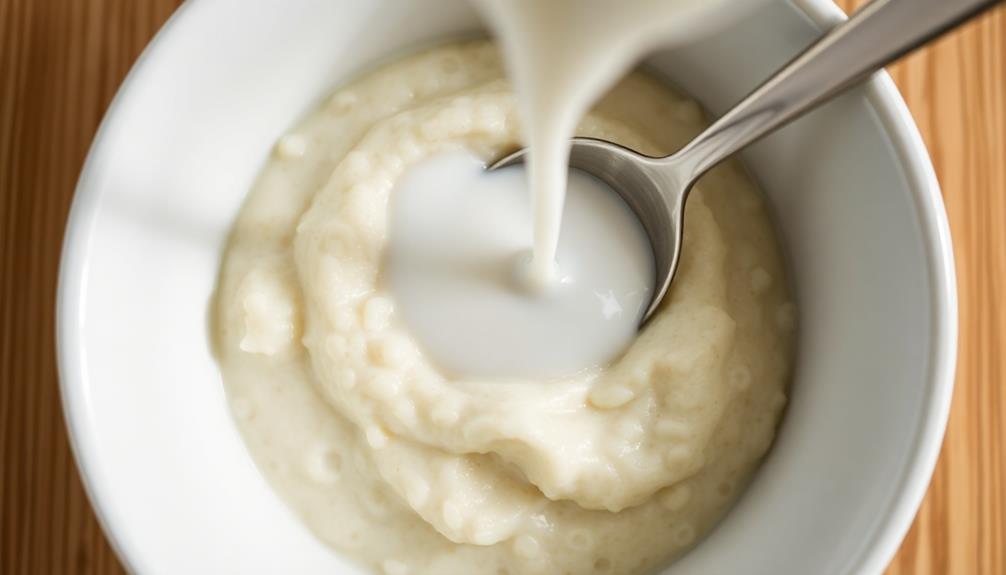
With your toppings in place, it's time to consider the consistency of your overnight oats. As the oats sit in the fridge, they'll continue to absorb the liquid, becoming thicker and creamier.
However, you may find that you prefer a looser texture. No problem! Simply stir in a splash or two of additional milk until you reach your desired consistency. Start with a small amount, perhaps 1-2 tablespoons, and mix well.
Taste and adjust as needed, adding more milk a little at a time until it reaches the perfect thickness for your liking.
Keep in mind that the amount of milk you'll want to add can vary based on factors like the type of oats used, how long they've been soaked, and your personal preference.
Some enjoy their overnight oats on the thicker side, while others prefer a more pourable, pudding-like texture. Experiment to find your perfect overnight oats consistency.
Final Thoughts
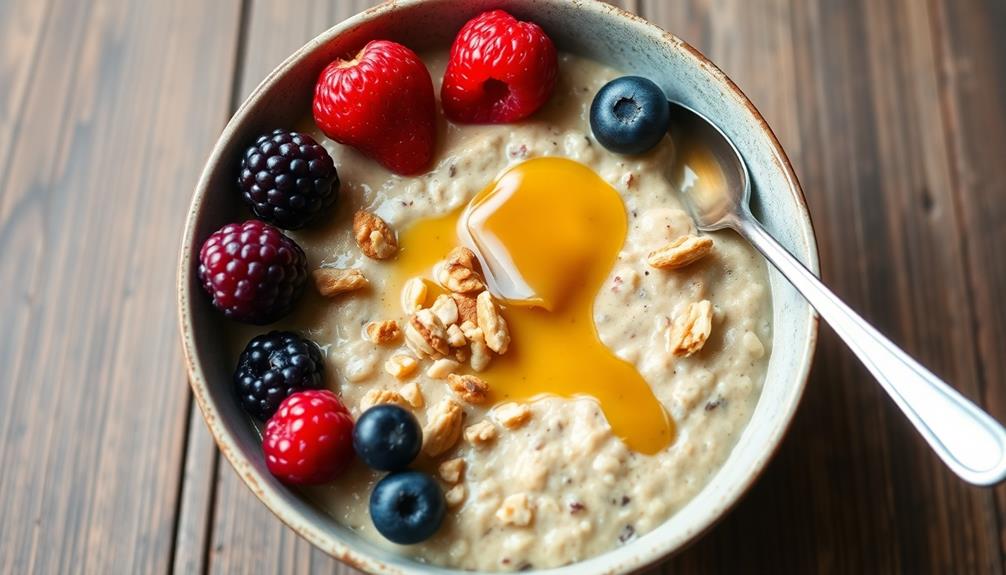
Overnight oats make for a wonderfully nutritious and convenient breakfast option. With the ability to prepare them ahead of time, you can save precious morning minutes and enjoy a delicious, wholesome meal to start your day.
The versatility of overnight oats is truly impressive – you can customize the flavors to your liking, whether that's a classic combination of berries and honey or a more indulgent treat like chocolate and peanut butter.
Beyond the taste, overnight oats offer numerous health benefits. The slow-releasing carbohydrates from the oats provide sustained energy, while the fiber and protein help to keep you feeling full and satisfied throughout the morning.
Additionally, the ability to incorporate a variety of nutrient-dense ingredients, such as chia seeds, nuts, and yogurt, makes overnight oats an excellent choice for a balanced breakfast.
Whether you're looking to streamline your morning routine or simply want a delicious and nutritious start to your day, overnight oats are a fantastic option to consider.
With their ease of preparation and endless flavor possibilities, they're sure to become a staple in your breakfast repertoire.
Frequently Asked Questions
Can I Use Any Type of Oats for Overnight Oats?
Yes, you can use any type of oats for overnight oats. Rolled oats, steel-cut oats, and even instant oats work well. The key is to adjust the liquid ratio based on the type of oats you choose.
How Long Do Overnight Oats Last in the Refrigerator?
Overnight oats can last 4-5 days in the refrigerator when stored properly in an airtight container. The longer they sit, the softer and creamier they'll become, making them a convenient and delicious breakfast option throughout the week.
Can I Add Protein Powder to Overnight Oats?
You can definitely add protein powder to your overnight oats. Just be sure to adjust the liquid ratio to accommodate the extra dry ingredient. This will give your breakfast a protein boost and keep you feeling full throughout the morning.
Do I Need to Heat up Overnight Oats Before Eating?
You don't need to heat up overnight oats before eating. The oats have already been soaked in liquid, so they're ready to enjoy straight from the fridge. Just give them a quick stir and enjoy your chilled, nutrient-dense breakfast.
Can I Make Overnight Oats Without Dairy Products?
You certainly can make overnight oats without dairy products. Just use plant-based milk like almond, coconut, or oat milk instead. This makes the overnight oats vegan-friendly and dairy-free, allowing you to enjoy a wholesome breakfast.
